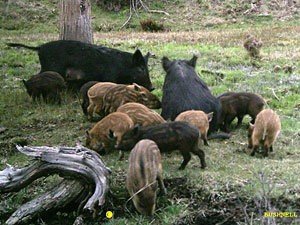Removing the Threat: Invasive Seaweed from Tsunami Debris
/When the tragic Tohoku earthquake and tsunami hit Japan in 2011, effects were felt around the world, even along Oregon’s coast. Soon after the event, debris started washing up on west coast shores with more than just an unpleasing aesthetic: the potential threat of new invasive species.
Gayle Hansen, an Oregon State University algal taxonomist, was one of the researchers who was in Newport when a large concrete dock washed up on shore. The Oregon Department of Fish and Wildlife (ODFW) determined it was imperative to remove the debris from the water as quick as possible to reduce the threat of new aquatic invasives. The persistence and hard work of the individuals tasked with removing the debris was highlighted in a statement by Steven Rumrill of ODFW: "The State of Oregon was able to remove about 90 percent of the derelict and damaged vessels from Japan that arrived along Oregon beaches – and most of the vessels were immediately removed from the surf zone over a period of 24 hours or less”.
Newport, OR: A large concrete dock that floated ashore after the 2011 tsunami in Japan (Photo Credit: Oregon Live).
Hansen is the lead author of a study that was published earlier this month in Phycologia that provided some good news after several years of aquatic invasive species research related to tsunami debris from Japan. Findings concluded that none of the potentially invasive algae, seaweed, or other microorganisms that arrived on debris from Japan were successful in establishing themselves in the waters off of Oregon’s coast and that getting them off the beaches quickly was a “smart move”.
Read the original article written by Kale Williams of The Oregonian here.
Literature Cited
Gayle I. Hansen, Takeaki Hanyuda, and Hiroshi Kawai (2018) Invasion threat of benthic marine algae arriving on Japanese tsunami marine debris in Oregon and Washington, USA. Phycologia: 2018, Vol. 57, No. 6, pp. 641-658.





